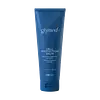What's inside
What's inside
 Key Ingredients
Key Ingredients

 Benefits
Benefits

 Concerns
Concerns

No concerns
 Ingredients Side-by-side
Ingredients Side-by-side

Petrolatum
EmollientSqualane
EmollientSaccharomyces Ferment Lysate Filtrate
Skin ConditioningButyrospermum Parkii Butter
Skin ConditioningRetinyl Palmitate
Skin ConditioningTocopheryl Acetate
AntioxidantPanthenol
Skin ConditioningBisabolol
MaskingYeast Beta-Glucan
Skin ConditioningCitrus Grandis Peel Oil
MaskingCitrus Aurantium Dulcis Peel Oil
MaskingPelargonium Graveolens Oil
MaskingRosmarinus Officinalis Leaf Oil
MaskingPhenoxyethanol
PreservativePetrolatum, Squalane, Saccharomyces Ferment Lysate Filtrate, Butyrospermum Parkii Butter, Retinyl Palmitate, Tocopheryl Acetate, Panthenol, Bisabolol, Yeast Beta-Glucan, Citrus Grandis Peel Oil, Citrus Aurantium Dulcis Peel Oil, Pelargonium Graveolens Oil, Rosmarinus Officinalis Leaf Oil, Phenoxyethanol
Allantoin
Skin ConditioningAloe Barbadensis Leaf Juice
Skin ConditioningAnthemis Nobilis Flower Extract
MaskingArbutin
AntioxidantCalendula Officinalis Flower Extract
MaskingCarbomer
Emulsion StabilisingCetyl Alcohol
EmollientEpigallocatechin Gallatyl Glucoside
AntioxidantEthylhexylglycerin
Skin ConditioningGallyl Glucoside
AntioxidantGlycerin
HumectantGlyceryl Stearate
EmollientGlycyrrhiza Glabra Root Extract
BleachingHyaluronic Acid
HumectantPEG-100 Stearate
Petrolatum
EmollientPhenoxyethanol
PreservativePropyl Gallate
AntioxidantSodium Hydroxide
BufferingSqualane
EmollientTetrahydrodiferuloylmethane
AntioxidantWater
Skin ConditioningAllantoin, Aloe Barbadensis Leaf Juice, Anthemis Nobilis Flower Extract, Arbutin, Calendula Officinalis Flower Extract, Carbomer, Cetyl Alcohol, Epigallocatechin Gallatyl Glucoside, Ethylhexylglycerin, Gallyl Glucoside, Glycerin, Glyceryl Stearate, Glycyrrhiza Glabra Root Extract, Hyaluronic Acid, PEG-100 Stearate, Petrolatum, Phenoxyethanol, Propyl Gallate, Sodium Hydroxide, Squalane, Tetrahydrodiferuloylmethane, Water
Ingredients Explained
These ingredients are found in both products.
Ingredients higher up in an ingredient list are typically present in a larger amount.
Petrolatum is more commonly known as petroleum jelly. It is created by mixing waxes and mineral oils.
This ingredient is effective at reducing water loss by 99%. This is because it is an occlusive. Occlusives create a hydrophobic barrier on the skin to prevent evaporation. This property makes it great for hydrating dry skin.
Pro tip: Use occlusives, such as this ingredient, on damp skin for the best results.
The quality or origin of petrolatum is only known when disclosed by the brand. Most cosmetic petrolatum has gone through several purification stages.
Another benefit of occlusives is it protects your skin against infection or allergies.
Petrolatum may not be safe for fungal-acne. Studies show mineral oil / petroleum leads to the growth of M. Furfur, a type of yeast.
Learn more about PetrolatumPhenoxyethanol is a preservative that has germicide, antimicrobial, and aromatic properties. Studies show that phenoxyethanol can prevent microbial growth. By itself, it has a scent that is similar to that of a rose.
It's often used in formulations along with Caprylyl Glycol to preserve the shelf life of products.
Squalane is an emollient that helps the skin hold onto moisture. It's an oily liquid that occurs naturally in certain types of fish and plant oils.
Because squalane boosts hydration in the skin, it also comes with plenty of benefits: it is an antioxidant and can help fight free radicals and skin damage. Squalane is also found to have a detoxifying effect when applied.
Squalane comes from squalene, which occurs naturally within the sebum of our skin. It is one of the oils our skin produces to keep itself hydrated. Squalane is the hydrogenated version of squalene and has a longer shelf life.
Research shows that squalane is non-irritating (even at 100% concentration).
In general, it's a fantastic ingredient. It does a great job at hydrating the skin, and it's suitable for those with sensitive skin.
The source of squalane may impact malassezia / fungal acne. This is because olive oil derived squalane can contain impurities such as fatty acids and plant waxes. Sugarcane derived squalane is recommended for anyone with malassezia concerns.
Is squalane vegan?
This depends on the source. Squalane can be derived from both plants and animals. Most squalane used in skincare comes from plants.
Please note: the source of squalane is only known if disclosed by the brand. We recommend reaching out to the brand if you have any questions about their squalane.
Read more about squalene with an "e".
Is squalane an oil?
Squalane is often called an oil, but it’s technically not; it’s a hydrocarbon, meaning it’s only made of carbon and hydrogen, unlike true oils which are triglycerides made of fatty acids and glycerol.
The term “oil-free” isn’t regulated, so companies can define it however they want. Some exclude all oils, while others just avoid mineral oil or comedogenic oils.
While some people avoid oils thinking they cause breakouts, the right kind of oil (or oil-like ingredient like squalane) can actually help balance and hydrate your skin. It’s worth testing out simple oils or squalane to see what works best for your skin.
Learn more about Squalane